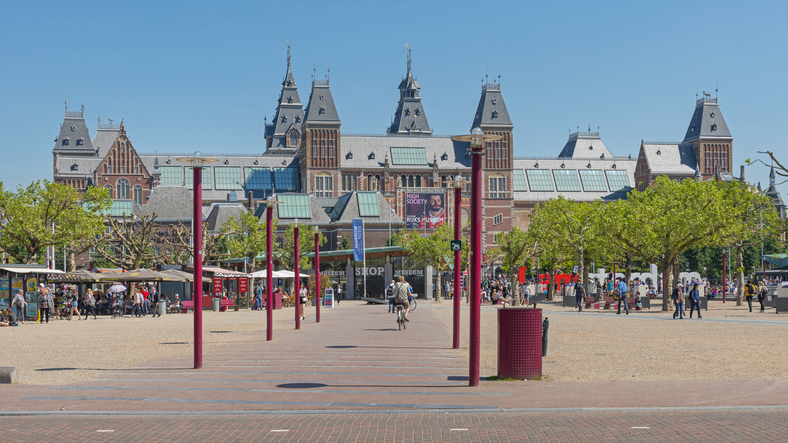In a striking development, hundreds of ancient artifacts from Crimea have finally returned to Ukraine after being stored in a Dutch museum for nine years. This significant transfer comes after a prolonged legal battle over their ownership between Russia and Ukraine. The Museum of Historical Treasures of Ukraine in Kyiv received the priceless works on Sunday. These artifacts, including gold jewelry, plaques, gems, and stone ornaments, were borrowed by the Allard Pierson Museum in Amsterdam from four Crimean museums in 2014 for an exhibition. However, the annexation of Crimea by Russia led to a fierce dispute over whether the treasures should be returned to Crimean museums under Russian control or to Ukraine, which argued for their rightful national heritage. This struggle over cultural property and national sovereignty has finally come to an end, marking a significant milestone in the ongoing conflict between Russia and Ukraine.

Return of Treasures From Crimea to Ukraine
The long-awaited return of ancient artifacts from Crimea to Ukraine has finally taken place after nine years of legal battles and disputes over ownership. The artifacts, which were on loan for an exhibition in a Dutch museum, arrived in Ukraine on Sunday, marking a significant victory for the country in the ongoing proxy war over national sovereignty and cultural property.
Background of the Artifacts
The artifacts in question were borrowed by the Allard Pierson Museum at the University of Amsterdam for its exhibition titled “Crimea: Gold and Secrets of the Black Sea.” The collection included a variety of valuable items such as gold jewelry, gold plaques, precious gems, Greek and Roman stone ornaments, and ceramics. Little did anyone know that the exhibition would coincide with Russia’s annexation of Crimea in 2014.
Dispute Over Ownership
The annexation of Crimea posed a dilemma regarding the rightful ownership of the artifacts. Should they be returned to the Crimean museums, now under Russian control, or to Ukraine, which argued that they were part of its national heritage? This question gave rise to a complex and lengthy legal battle between the parties involved.
Return of the Artifacts
After years of legal disputes, the artifacts have finally been returned to their rightful owners. The collection has been safely transported to the Museum of Historical Treasures of Ukraine in Kyiv, marking a significant moment for the country’s cultural heritage. The announcement of the return was made by Ukraine’s culture minister, Rostyslav Karandeev, who expressed gratitude to the Allard Pierson Museum for their assistance throughout the dispute. The University of Amsterdam has also confirmed the return of the artifacts.
Russian Involvement in Crimea
The annexation of Crimea by Russia in 2014 was met with strong condemnation from the international community. The United Nations and the European Union declared the move illegal, as it violated Ukraine’s sovereignty. In addition to the political implications, the annexation also had a detrimental impact on the region’s cultural heritage. Cultural sites were destroyed, and artifacts were looted, adding fuel to the ongoing legal battle over the ownership of the Crimean treasures.
Arguments from Both Sides
The ownership dispute over the artifacts sparked arguments from both Ukraine and the lending museums. Ukraine based its claim on the loan agreements for the exhibition, asserting that the artifacts were under its ownership at the time. On the other hand, the lending museums, including the Central Museum of Tavrida, the Kerch Historical and Cultural Preserve, the Bakhchisaray History and Cultural State Preserve, and the National Preserve of Tauric Chersonesos, argued for the return of the artifacts to Crimea based on the loan agreements as well.
Dutch Supreme Court’s Ruling
The Dutch Supreme Court ruling on the ownership dispute was a crucial step in the return of the artifacts to Ukraine. President Volodymyr Zelensky praised the ruling, emphasizing that the collection cannot be returned to Crimea due to the ongoing occupation. He expressed his commitment to returning the works to their places of origin once Ukraine reclaims the territory, which he hopes will be in Crimea.
Preparations for Return
Given the fragility and value of the artifacts, preparations for their return took several months. The Allard Pierson Museum agreed not to charge Ukraine for storage fees over the nine-year period while the treasures were kept in its basement. This included covering security and climate control costs. Ukraine also took on some of the moving expenses involved in the return process.
Conclusion
The return of the Crimean artifacts to Ukraine is seen as the right thing to do, both from a legal and moral perspective. It signifies a victory for Ukraine’s national heritage and a step towards reclaiming the territory of Crimea. As the artifacts find their new home in the Museum of Historical Treasures of Ukraine, there is hope that the Ukrainian flag will once again fly in Crimea. This serves as a reminder that cultural property should be protected and preserved, regardless of political conflicts.

